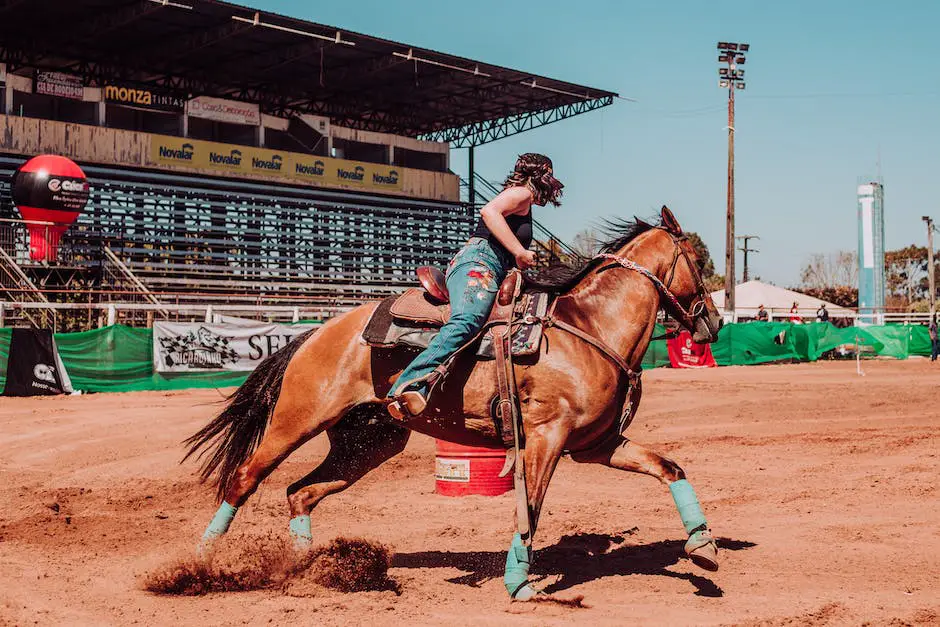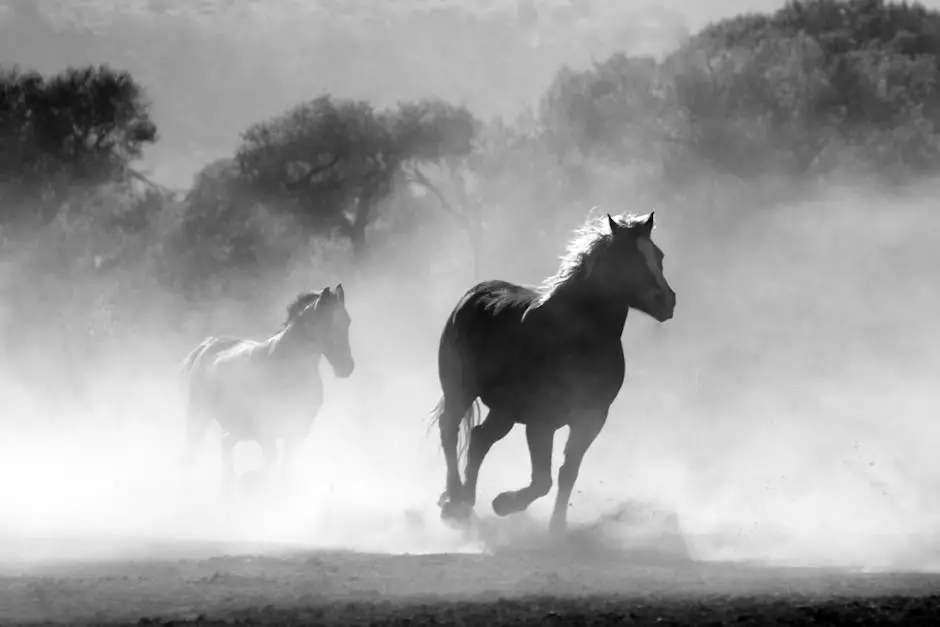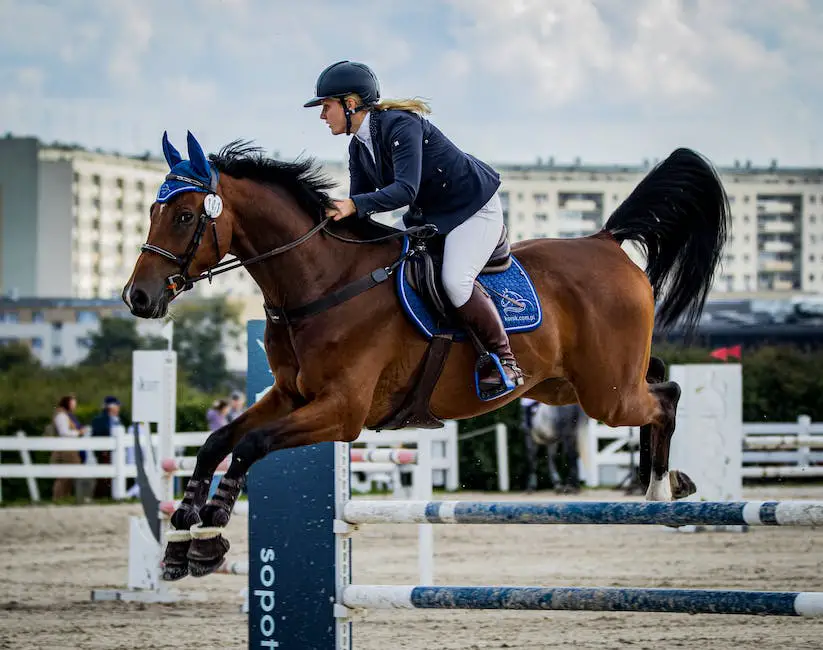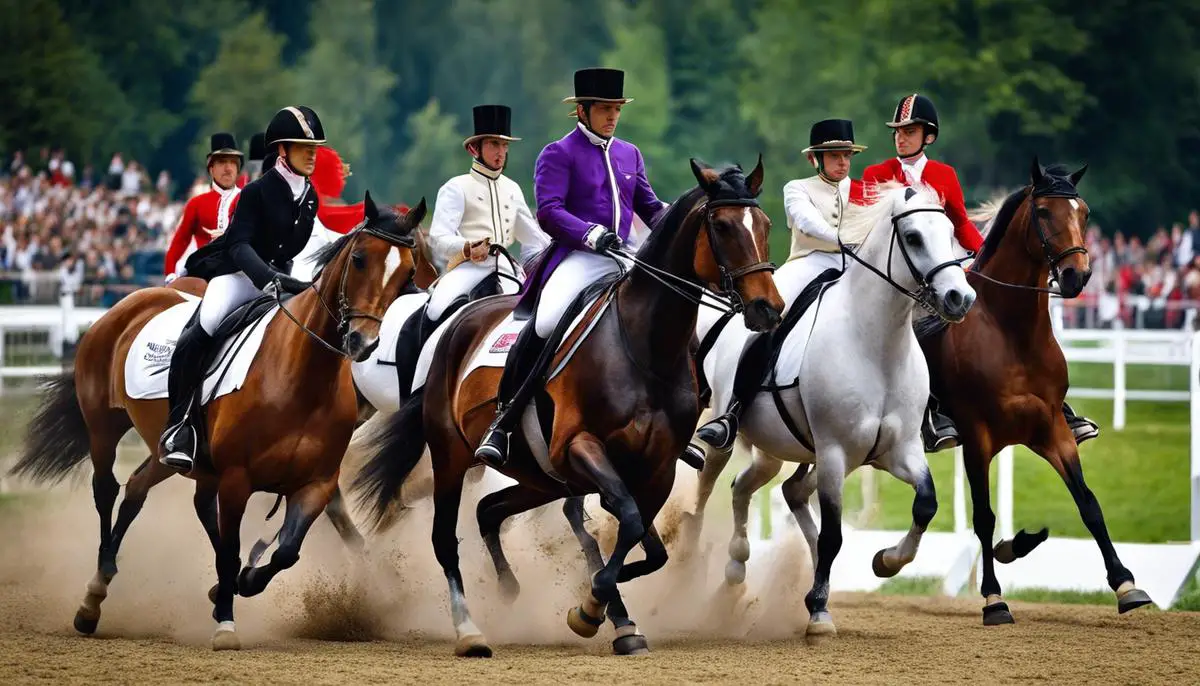Immerse yourself in the captivating world of Swiss horse competitions, a unique realm shaped by Switzerland’s rich equestrian heritage, deep-seated cultural pride, and unyielding admiration for the horse. Drawn into this riveting milieu, you will discover its distinct characteristics, the core elements that color these competitions and how they triumphantly stand apart from other global equestrian events. As we journey deeper, we gain insights into key equestrian events, the invaluable role of horses in Swiss culture and history, the unique attributes of participating Swiss horse breeds, and the zealous preparation involved in Swiss horse competitions.
Table of Contents (Horspedia)
Understanding Swiss horse competitions
The Unique Elegance of Swiss Horse Competitions
Without a doubt, horse competitions allure spectators with the grace, power, and talent of their equine participants. But for hobbyists, these events offer fascinating insights into the finer points of horsemanship, each with its own regional flavor. Among these tournaments, Swiss horse competitions hold a distinguished spot. What sets these Swiss contests apart from their global counterparts? There’s quite a tale to tell.
First and foremost, Swiss horse competitions are renowned for their strict adherence to safety and welfare standards. The Swiss Equestrian Federation ensures that all competitions comply meticulously with national and international regulations, making the country’s events some of the safest anywhere in the world.
In the realm of equestrian sport, Dressage is a discipline where Swiss competitors shine particularly brightly. Rooted in classical horsemanship and requiring incredible precision, Dressage is essentially ballet for horses. Swiss Dressage competitions spotlight the harmonious relationship between horse and rider, a spectacle of impeccable control, balance, and rhythm.
Crossing over to the heart-pounding world of Show Jumping, Swiss standards are in a league of their own. These competitions are typified by grand, high-stakes jumping tracks, constructed to challenge both horse and rider. Scoring relies heavily on precision, speed, and the horse’s agility in navigating these fabricated hurdles. Swiss show jumpers have continually made their mark in international tournaments, their skill a testament to the rigorous training that typifies the Swiss approach.
An intriguing facet of Swiss competitions is its beloved tradition of Steeplechase—an equestrian event involving horse and rider tackling various distance and terrain-based obstacles. This sport, with its emphasis on endurance and agility, originated in Ireland and the UK. Switzerland, however, has adopted it with great fervor, adhering to its root principles while injecting it with that inherently Swiss obsession for detail and precision.
Swiss Mounted Games magnify the thrill aspect, offering a blend of speed racing and obstacle courses that test both horse and rider’s agility and teamwork. Originating in the UK, this close relation to Gymkhana is still competitive but emphasizes fun, encouraging participation from people of all ages and levels of experience.
Last but certainly not least, Swiss horse competitions stand out due to the well-organized and highly communal nature of these events. Tightly-knit equestrian communities and clubs, often founded on shared cantonal or regional loyalties, work together to stage competitions. These events are not just about the contest, but also serve as social platforms where attendees can network and share their passion for horses.
In conclusion, Swiss horse competitions are about more than just who does it fastest or jumps the highest—they’re a showcase of complex skills, practiced to perfection and performed within an atmosphere of respect, camaraderie, and high regard for the welfare of the equine athletes involved. Swiss horse competitions indeed hold a distinguished spot in the world of equestrian sports, marked by their unique blend of safety, precision, camaraderie, and a deep-rooted respect for the art of horse-riding. This dedication manifests in the Swiss arena, where every gallop resonates with the nation’s equestrian spirit.

Key Swiss Equestrian events
Diving deeper into the world of Swiss equestrian events, there are several standout competitions that have made their mark not just in Switzerland, but on the international stage as well. These gatherings are where the meticulous training, dedication, and passion of competitors and their equine partners truly shine.
The Pferdesporttage Gurmels hosts one of the major events in the Swiss equestrian calendar, with its national show jumping and dressage competitions. This event, occurring annually, carries a history spanning over four decades. It prides itself on the quality of its competition and the integrity of its judging. With a youth development focus, it continues to nurture fledgling skills and ignite passions anew in its younger riders.
A must-see event is the Longines CSI Ascona. This glamorous horse show takes place in the beautiful Italian-speaking part of Switzerland and is notable for featuring international level competitors. It offers a glimmer of elegance and sophistication while maintaining an intense atmosphere of swiftness and precision that can only be found in high-level show jumping.
In the world of carriage driving, the CHIO Aachen tournament in Germany is an unmissable event for Swiss competitors. Switzerland has often been represented by several skilled teams and individual competitors, each demonstrating the classic poise and precision that this event demands.
Perhaps one of the most exhilarating equestrian events in Switzerland is the White Turf Race Meeting. Held on the frozen lake of St. Moritz annually, it’s a unique blend of endurance and harness racing, flat racing, and ski joering, where skiers are pulled across the snow by galloping horses. Amid the breathtaking Alpine landscape, this prestigious event emphasizes the grit, endurance, and competitive spirit of the Swiss equestrian community.
On a more grassroots level, the Swiss Team Trophy competition fosters community and teamwork within the Swiss equestrian world. Run by the Swiss Equestrian Federation, local clubs compete against each other across three disciplines – dressage, show jumping, and eventing. This boosts not only local participation and spectatorship but also strengthens communal ties within the equestrian world.
Looking beyond the major competitions, it is important to remember the countless local and regional equestrian events that take place throughout Switzerland. These events may not have the glitz and glamor of international tournaments, but they form the backbone of the Swiss equestrian community and ensure the continuing development of the sport at all levels.
In a nutshell, Swiss equestrian events offer more than just sport. They are immersive experiences that encapsulate the beauty of skillful riding, heart-thumping competition, and the unwavering bond between horse and rider. Whether it is the international show jumping at the Longines CSI Ascona, the mingling of communities at the Swiss Team Trophy, or the daring thrill of the White Turf Race Meeting, there is always a sense of anticipation and excitement in the Swiss equestrian scene.

Role of horses in Swiss culture
As enthusiasts delve deeper into the delightful realm of Swiss equestrianism, there is a whole gamut of interesting facets that come to the fore. What is particularly intriguing is how horses and horse competitions have been embedded deeply into Swiss culture, exerting an influential role that cannot be ignored.
Switzerland has a long tradition with horses that lies beyond show jumping and dressage. The country’s equestrian history is rooted in practical use as much as in sport. Farmers rode horses for fieldwork and transportation, roles that naturally evolved into more leisurely pursuits, such as pleasure riding and racing.
One of the most captivating aspects of Swiss culture is the homage it pays to horse-driven farming, typically represented through the popular horse pull competitions. These events, where horses display their raw strength and fitness by pulling heavy weights, hark back to the days when they were an integral part of agriculture. These humble countryside competitions draw thousands from both urban and rural areas, bridging the gap between city dwellers and their country counterparts. Maintaining a deep connection with this rich past, these events offer a cultural insight into how horses have been integral to the Swiss lifestyle.
Horses aren’t merely part of the scenic Swiss landscape or vibrant competitions; they are also woven into the fabric of Swiss art and folklore. Visiting Switzerland, one is sure to witness sculptures, paintings, and memorabilia depicting horses in a variety of roles – from ploughing fields to charging into battle. These artistic renditions often mirror Switzerland’s reverence for the horse and its integral place in the country’s culture.
Horse festivals, too, play a significant role in Swiss society. One example is the Marché-Concours held annually in Saignelégier, the Swiss ‘horse capital’, and home to the Freiberger horse breed. instituted in 1897, this festival features competitions, parades, races, and shows, making it far more than just a gathering for equestrian fanatics. It’s a veritable celebration of Switzerland’s equine heritage that witnesses spectators throng in tens of thousands.
What’s more, Swiss youth organizations often incorporate equestrian activities into their programs. Swiss children learn horsemanship as part of their daily school routines, which instills a sense of respect and care for animals in young minds, while allowing these kids an early exposure to horse sports.
Swiss Olympic teams, too, proudly ride into international horse competitions, a testament to equestrianism’s high stature in Swiss society. Swiss riders have continually showcased exceptional skill and sportsmanship, highlighting the considerable investment they, and their country, put into the sport.
In conclusion, horses and horse competitions are more than just a popular pastime in Switzerland; they are a part of the Swiss identity, deeply ingrained in the nation’s history, tradition, and everyday life. Such is the fascinating journey of Swiss equestrianism – a journey that transcends mere sport, plunging into a rich, intriguing tapestry of Swiss culture. Avid equestrians and casual observers alike are sure to find immense interest in this unique interplay of sport, history, and tradition – a true Swiss legacy.

Swiss horse breeds and their traits
Swiss horse breeds, much like the country itself, embody a unique blend of strength, agility, and a sense of elegance that attracts equine enthusiasts and competitors from around the globe. The two prominent Swiss horse breeds — the Franches-Montagnes and the Swiss Warmblood, have attributes that befit a variety of equestrian competitions, displaying the versatility of Swiss horsemanship.
The Franches-Montagnes, also known as Freiberger, is the last indigenous Swiss horse breed. A sturdy, multipurpose horse, they possess excellent endurance and a calm temperament making them exceptional for harness racing and ideal for pleasure riding. These horses are robust, well-muscled, with a powerful stride that can be quite captivating in events like Dressage, and their docile temperament makes them suitable for Mounted Games that require equine patience as much as human skill.
On the other hand, the Swiss Warmblood, which is a derivative of many fine European breeds like the Hanoverian and Holsteiner, exhibits a different set of competitive strengths. They display impressive speed, strength, and a high jumping ability that makes them ideal candidates for Show Jumping and Steeplechase. These horses embody the essence of power and grace on the competitive stage, hence their demands as competition horses.
Swiss horse competitions also accommodate other breeds in their events, making their competitions a fine spectacle of equestrian diversity. The Haflinger, characterized by their chestnut color and flaxen mane, also grace the Swiss competition scene. Originating from neighboring Austria, these versatile horses are well-known for their pleasant disposition, and agility, being excellent in a range of tasks from riding to light draft work, they often feature in local and regional equestrian events.
Alternative horse breeds are also part of these competitions. For example, the remarkable Quarter Horses, the agile and fast American breeds, often light up the entertaining Ski joering events, held at the iconic White Turf Race Meeting.
There’s an extraordinary practicality in how Swiss horse competitions are organized and executed, complimenting the variety of breeds that take part. Each breed’s unique traits are recognized and utilized effectively, not just for competition, but shaping a culture that is centered around equine-centric activities. This strategy serves to promote not just each breed’s potential, but the intangible bond that exists between the horses and their riders.

Training and preparation for Swiss horse competitions
Unleashing the Competitive Spirit: Training Practices for Swiss Horse Competitions
Swiss horse competitions are noteworthy spectacles that exhibit the perfect balance of strength, skill, and tradition. However, behind those amazing performances are extensive periods of training and preparation. This rigorous preparation isn’t simply about winning the competition, but about promoting the harmonious bond between the horse and Trainer, affirming the true essence of horse competitions.
Understanding the breed’s specific traits is crucial to the training process. For instance, the Franches-Montagnes breed is known for its versatility and well-balanced temperament – traits that come in handy during the intense moments of a competition. The Swiss Warmblood, on the other hand, is famed for its strength and speed, making it a popular choice for show jumping and eventing. Still, other breeds, such as the agile Haflinger and even the American Quarter Horse, are certainly seen pushing boundaries in Swiss competitions. Identifying these innate attributes allows for effective training programs tailored to each horse’s strengths.
Staying healthy is the foundation of any training program. Regular health checks and appropriate nutrition plans are key to keeping horses fit and ready for action. Following the Swiss standards of horse welfare, trainers prioritize providing quality feed, maintaining healthy weight proportions, and ensuring adequate rest periods. Routine vet check-ups and farrier services help monitor any health issues and keep their hooves in ideal condition. All these elements combined ensure that the horse remains healthy and can perform at their peak on competition day.
Training regimes differ based on each competition’s requirements. Dressage requires precise movements, demanding structured, methodical training that builds by degrees. This discipline needs a patient approach and consistent reinforcement to achieve perfect execution. Alternatively, training for steeplechase entails vigorous endurance exercises, leaps, and gallops to acclimate the horses for the energy and agility demands of the competition. It’s all about improving their physical abilities while teaching them to respond quickly to the rider’s signals.
Swiss Mounted Games demand an entirely different set of training exercises. Emphasizing teamwork and fun, horses are trained to become comfortable with the playful risk and reward system implemented in the games. They gain familiarity with carrying equipment and swiftly adjusting to sudden changes in the riding pattern.
In the backdrop of every training is the rider-horse bond that only intensifies during the process. Only when the horse trusts the rider can the intricate movements required in many competitions be achieved. Fostering this trust is done through regular interaction and communication between the horse and rider, whether in the stall or during training.
Training for Swiss horse competitions is as much about enjoying the process as it is about winning. Creating a supportive environment for growth and learning within the horse community helps competitors advance in their skills and competence. By recognizing the unique attributes of the different horse breeds, prioritizing their physical health, and cultivating the bond between the horse and rider, Swiss horse training ensures that the spirit of competition remains strong among the equestrian community while promoting the well-being and happiness of these magnificent creatures.

Having navigated the intricacies of the Swiss horse competition landscape, you’ll now have a newfound appreciation for the country’s equestrian tradition. The distinctive hallmarks of its major events, the profound cultural implications, and the influence of Swiss horse breeds reveal a world where pride, precision, and a deep-rooted love for horses reign. The dedication to training and meticulous preparation that goes into every competition accentuates the inimitable character of these events. This exploration into the vibrant heart of Swiss horse competitions surely enriches not just our understanding of the sport but also underlines the emphasis the Swiss place on tradition, excellence, and their deeply ingrained horse culture.
